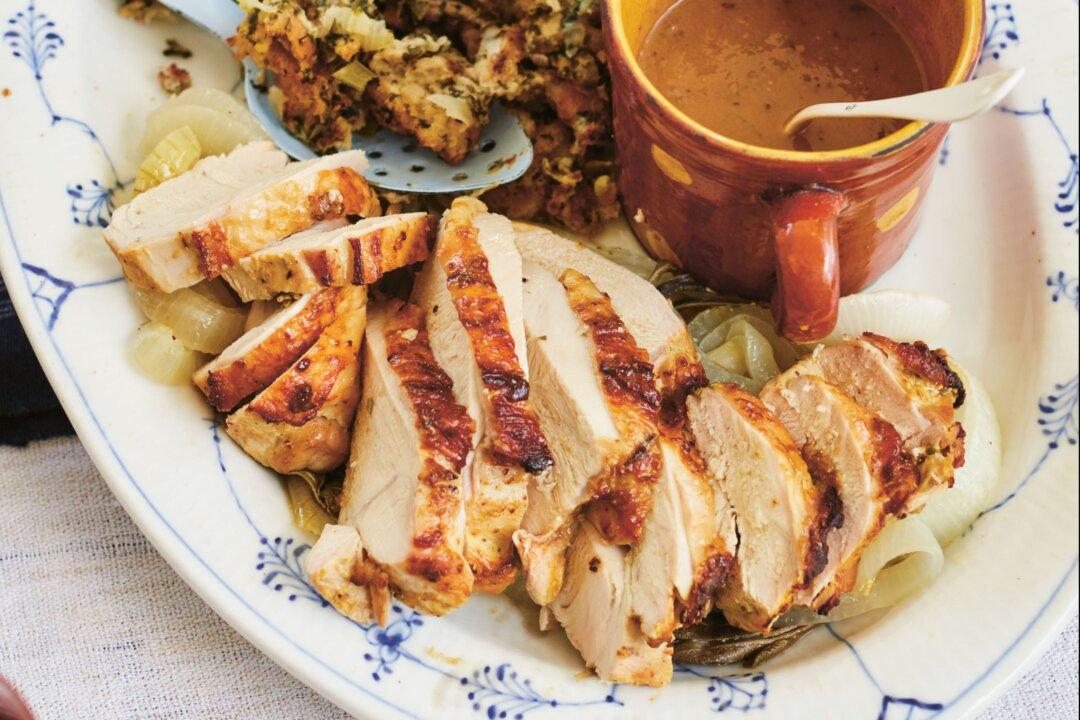Roast Turkey Breast and Onions with Mustard and Sage
I often make one small whole turkey and an extra turkey breast for my Thanksgiving. Most of the crowd at my house prefers white meat, and I really like it left over for sandwiches, so this plan makes the most sense for our holiday. This is my go-to recipe for turkey breast that is the opposite of dry and boring and also cooks so quickly, which is the antithesis of most Thanksgiving turkey. The real trick here is getting boneless, skin-on turkey breasts, which you essentially treat as really large boneless chicken breasts. To serve 12, you’ll need more than one turkey breast. If you don’t have a roasting pan large enough to roast the turkey breasts in a single layer, use two pans (double the onions, oil, and water and rotate the pans halfway through roasting).Serves 12
- 1/2 cup Dijon mustard
- 2 tablespoons kosher salt
- 1 tablespoon freshly ground black pepper
- 1 large bunch fresh sage
- 6 pounds boneless, skin-on turkey breast halves, at room temperature, patted dry with paper towels (see note)
- 2 large yellow onions, thickly sliced (as if you were making onion rings)
- 2 tablespoons olive oil
- 3/4 cup water






